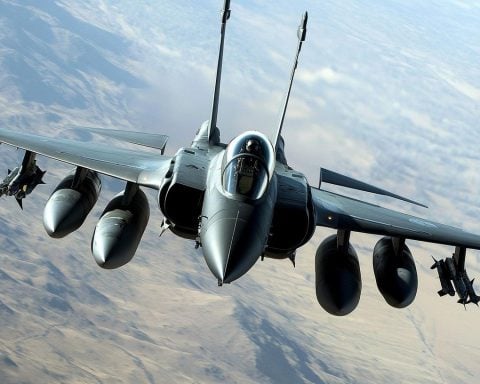In the world of military operations, even minor errors can lead to monumental costs, as illustrated by a recent unfortunate incident involving a U.S. Air Force F-16 fighter jet. This costly accident, resulting from a simple mistake, is projected to burden American taxpayers with a $30 million bill.
A comprehensive 41-page report released by the U.S. Air Forces Europe-Air Forces Africa revealed that the mishap stemmed from “a lapse in situational awareness and a failure to execute emergency protocols effectively” by the operator of a weapons loading vehicle.
Almost a year ago, in November 2023, a mishap occurred when an MJ-1 “jammer” vehicle collided with an F-16 deployed from Aviano Air Base, Italy. The operator, while reversing the vehicle, mistakenly accelerated, causing the jammer to veer into the parked aircraft, leading to substantial damage.
The impact of the jammer’s collision caused a minor fuel leak, subsequently igniting a fire on the F-16. Although no crew members sustained serious injuries, the financial implications included significant damage to the aircraft and environmental clean-up costs.
The report highlighted that subtle differences between the MJ-1B and MJ-1C models might have contributed to the incident. The operator failed to apply the correct emergency shutdown procedures in a moment of panic due to unfamiliarity with minor technical variations.
Ultimately, the incident underscores the importance of rigorous adherence to maintenance protocols and training standards to prevent such costly mistakes in the future. The report concluded that a negligent maintenance culture was a significant factor in the accident’s occurrence.
The $30 Million Mistake: Unseen Impacts and Lessons from a Fighter Jet Accident
In the face of military operations, the recent incident involving a U.S. Air Force F-16 fighter jet serves as a stark reminder of how small errors can cascade into significant problems. However, beyond the $30 million bill facing American taxpayers, what repercussions does this event have on lives, communities, and nations?
The Underlying Impact on Military Training and Preparedness
The incident highlights a crucial gap in military training and preparedness. Military forces worldwide must maintain vigilance in ensuring operators are well-prepared and thoroughly familiar with all types of equipment, especially when even subtle differences between models, like the MJ-1B and MJ-1C jammers, can have severe consequences. Improving training programs to emphasize emergency protocol drills and equipment familiarity could mitigate future risks, not only securing taxpayer savings but also enhancing overall military effectiveness.
Environmental and Community Repercussions
Although no crew members were severely injured during the incident, the environmental impact, including fuel spills and fire outbreaks, needed substantial measures for mitigation. Such events necessitate a deeper examination of environmental protocols within military operations and the surrounding communities. Ensuring rapid containment and minimal ecological damage must become a priority to maintain trust between military operations and local communities that might be affected.
Global Military Implications
Could such incidents trigger ripple effects across military forces worldwide? The answer could be affirmative, as the negligence cited in the report calls for global introspection across defense forces. Lessons learned from this incident should ripple to ally countries, prompting a reevaluation of their training practices and readiness evaluations. Recognizing the shared potential for similar mishaps offers an opportunity for international military cooperation in establishing stronger safety protocols.
Interesting Facts and Controversies
One fascinating aspect lies in the technological continuity and evolution within military equipment. Despite advancements, the technological leap between generations of equipment can be minuscule yet crucial. This raises questions: Is current military technology too complex for safe operation? Should the focus shift toward simplified, user-friendly designs to prevent such human errors? On the controversial side, debates about the allocation of taxpayer money are amplified. Is the $30 million a justified expense for mishap remedial action, or could these funds find more purposeful deployment elsewhere?
Global military powers might scrutinize whether technological intricacy outweighs the benefits when human factors persist as potential points of failure. Furthermore, this incident highlights the trade-offs between advanced technology and reliable, human-operated machinery—key considerations in defense strategies.
For more insights on military technology and developments, visit Defense.gov.
This incident reiterates an existing truth in military operations: humans play vital, enduring roles that technology cannot yet replace. With ongoing reviews, enhanced training, and protocol revision, military forces might prevent catastrophic losses more effectively, safeguarding communities and optimizing national defense funds.






















